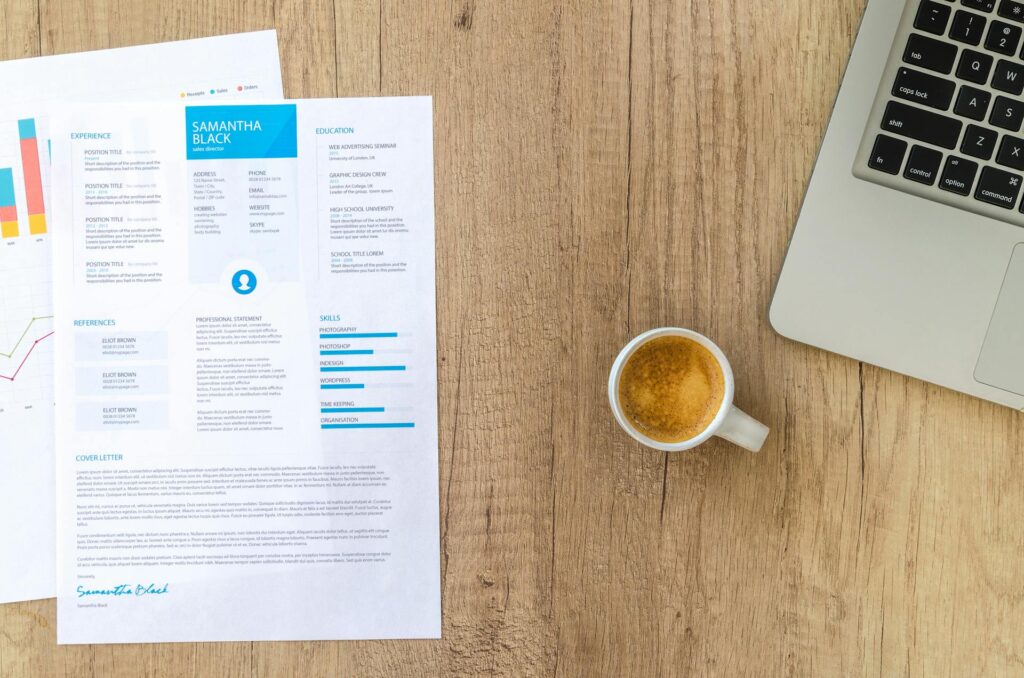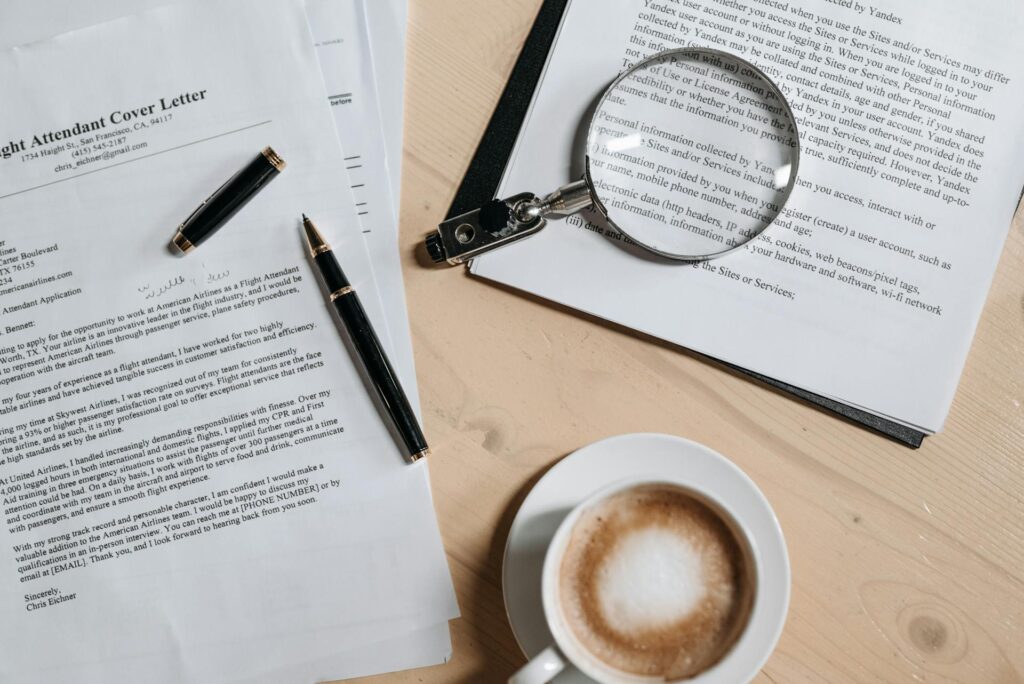Learning how to write a cover letter for a job in the UK can feel overwhelming, especially if you’ve never written one before. It’s something most of us are expected to know, but rarely taught. You may be thinking about how to keep it professional while still making it feel personal, especially if you don’t have much experience yet.
Here’s the thing: a great cover letter isn’t about having the perfect job history. It’s about telling your story, showing your potential, and connecting with the employer. Whether you’re a school leaver fresh out of college or a young professional stepping into the working world, this guide is here to help you write a cover letter that actually gets read—and remembered. Let’s break it all down together.

What is a Cover Letter and Why Does It Matter?
A cover letter is a short, one-page document you send with your CV when applying for a job. Think of it as your personal handshake before you even walk into an interview. It introduces who you are, explains why you’re interested in the role, and highlights your most relevant skills or experiences.
Unlike your CV, which lists what you’ve done, your cover letter tells the employer why you’re the right person for the job. It’s your chance to stand out—and yes, it can be the difference between getting an interview or getting ignored.
The Difference Between Cover Letter and CV
If you’re new to job applications, it’s easy to confuse a cover letter with a CV. They might seem similar at first glance, but they serve very different purposes—and both are equally important.
Your CV (short for Curriculum Vitae) is like your professional timeline. It’s a structured document that outlines your education, qualifications, work history, skills, and achievements. Think of it as a factual summary of your career journey, usually 1 to 2 pages long. It’s more about presenting the details clearly and concisely, often in bullet points or sections.
On the other hand, your cover letter is more like your voice. It’s your chance to explain why you’re applying, why you think you’d be a good fit, and why the company should choose you. It should highlight the most relevant parts of your CV and add personality to your application. Unlike the CV, which is universal for many jobs, your cover letter should be tailored to each specific role you apply for.
In simple terms: your CV gets you through the door, and your cover letter gets you noticed once you’re inside. Your CV shows what you’ve done, while your cover letter helps connect that to what the employer is looking for. They work together. Even if you don’t have much experience yet, a well-written cover letter can show your interest, your attitude, and your potential—and that can really help you stand out. Now, let’s look at how to write a cover letter for a job in the UK.

Step One: Prep Like a Pro
Before you dive into writing, spend a few minutes doing your homework. Research the Role & Company. Read the job description in details—what keywords keep popping up? Are they looking for someone with strong communication skills? Teamwork? Creativity? Those clues help you tailor your cover letter.
Then head to the company’s website or social media. What’s their culture like? What are their values, Do they value innovation, inclusion, sustainability? Taking the time to learn about the company shows you’re genuinely interested, and that can make a really good impression.
Step Two: Reflect on You
Even if you don’t have job experience, you’ve got more value than you think. Have you done volunteer work, school projects, extracurriculars, or even cared for family? Those are transferable skills!
If you’re feeling stuck, ApplyBuddy has got you covered. Send us a DM today and we’ll help you match your skills to any job description.
Step Three: Reflect on Your Skills and Experiences
This step is especially important if you’re a school leaver, student, or someone without traditional work experience.
Think about:
- Volunteer work
- Group projects at school or uni
- Clubs or societies you’ve been part of
- Helping out at home, or caring for a family member
- Sports teams, event planning, or personal projects
These experiences often involve transferable skills like leadership, time management, teamwork, communication, and problem-solving.
Write down a list of the key skills the job description mentions, and next to each one, jot down a time when you’ve used that skill—even outside of a job setting.
Feeling unsure about what skills to highlight? DM us @ApplyBuddy, and we’ll help you match your experience to the job description.
Step Four: Use a Clear and Professional Structure
Now that you’ve done your prep, it’s time to bring it all together in a clean, easy-to-read format. Here’s how to structure your cover letter:
1. Header: Include your contact information, the employer’s details, and the date.
2. Greeting: If you know the hiring manager’s name, use it (e.g. Dear Ms. Brown). If not, use Dear Hiring Manager or Dear [Company Name] Recruitment Team.
3. Opening Paragraph: Mention the role you’re applying for, where you found it, and why you’re interested. Add something that shows you’ve done your research.
4. Middle Paragraph(s): This is your chance to highlight your most relevant skills and experiences. Use real examples and link them to what the company is looking for. Keep your tone professional, but let your personality show through.
5. Closing Paragraph: Summarise why you’re a great fit, express your interest in the role, and thank them for their time. Add a call to action like, “I’d love the chance to discuss this role further in an interview.”
6. Sign Off: Use Yours sincerelyif you know their name. Use Yours faithfully if you don’t. Then add your full name.
Always save your cover letter as a PDF (unless told otherwise). It keeps your formatting intact and looks more professional.
Step 5: Edit, Proofread & Get Feedback
Once you’ve written your cover letter, don’t rush to send it off. Take time to polish it.
- Check for grammar and spelling mistakes
- Read it out loud to hear how it flows
- Make sure it’s no longer than one A4 page
- Ask a friend, teacher, or mentor to read it and give feedback
How to Structure a Cover Letter (UK Style)
The Header
[Your Name]
[Your Address]
[City, Postcode]
[Phone Number] |[Email Address]
[Date]
[Hiring Manager’s Name]
[Company Name]
[Company Address]
The Greeting
Whenever possible, address the hiring manager by name—it shows effort and research.
- If you have a name: “Dear Ms. Davies,” or “Dear Mr. Ahmed,”
- If not: “Dear Hiring Manager,” or “Dear [Company Name] Recruitment Team,”
The Opening Paragraph
Introduce yourself, mention the position, and say where you found the job ad. But don’t stop there—hook them in!
Example:
I’m writing to apply for the Marketing Assistant role at Bright & Co, as advertised on Indeed. As a recent graduate with a strong passion for digital storytelling and hands-on experience managing social media for my university club, I believe I can bring creativity and drive to your team.
Middle Paragraph(s)
This is where the magic happens. Highlight relevant skills, achievements, and experiences—even from school or part-time jobs. Show enthusiasm for the role and make it clear why you’re a strong fit.
Example:
During my time at college, I organized a fundraising campaign that raised £2,000 for a local charity. I managed promotions, coordinated a team of volunteers, and delivered a pitch to the student council. That experience taught me valuable skills in leadership, communication, and project planning—skills I’m excited to bring into a full-time role at your company.
Final Paragraph
Wrap things up with confidence.
Example:
I’m genuinely excited about the opportunity to contribute to Bright & Co’s mission. I’d love the chance to speak further and share how I can bring value to your team. Thank you for considering my application—I hope to hear from you soon.
Sign-Off
- If you used a name for the introduction: Yours sincerely
- If you didn’t: Yours faithfully
Then add your full name at the bottom.

Common Cover Letter Mistakes to Avoid
- Copy-pasting the same letter for every job
- Being too generic (“I am a hardworking individual…”)
- Typos or poor formatting
- Talking too much about what you want instead of what you can offer
Need a Little Help? Let ApplyBuddy Handle It
We get it—writing the perfect cover letter can feel overwhelming. That’s where ApplyBuddy steps in. We’re your trusted job search partner, and we’re here to take the pressure off.
Here’s what we can do for you:
- Custom-written cover letters tailored to the UK market
- Resume/CV optimization that beats Applicant Tracking Systems (ATS)
- LinkedIn makeovers that recruiters can’t ignore
- Full job application packages and interview coaching
DM us on Instagram @ApplyBuddyor visit our site to get started. Your dream job is waiting—we’ll help you grab it.
FAQs: Cover Letters for UK Job Applications
1. What Should I Include in a Cover Letter for a Job in the UK?
Include your contact info, the hiring manager’s name (if possible), an engaging intro, 1–2 body paragraphs with relevant skills, and a confident closing with a call to action.
2. How Long Should My Cover Letter Be?
Keep it to one page max. Recruiters don’t have time to read essays.
3. Can I Use the Same Cover Letter for Different Jobs?
Nope—always tailor it. You can start with a basic template but tweak it for each role.
4. How Do I Address a Cover Letter Without a Name?
Use “Dear Hiring Manager” or “Dear [Company Name] Recruitment Team.”
5. What’s the Biggest Mistake in Cover Letters?
Being too generic and not showing how you match what the employer is looking for.
